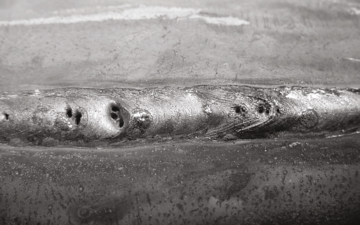Specialist Guidance on What is Porosity in Welding and Just How to Address It
Specialist Guidance on What is Porosity in Welding and Just How to Address It
Blog Article
The Scientific Research Behind Porosity: A Comprehensive Guide for Welders and Fabricators
Comprehending the elaborate mechanisms behind porosity in welding is crucial for welders and producers striving for impressive craftsmanship. From the composition of the base materials to the ins and outs of the welding process itself, a plethora of variables conspire to either intensify or relieve the visibility of porosity.
Recognizing Porosity in Welding
FIRST SENTENCE:
Examination of porosity in welding discloses important insights right into the honesty and top quality of the weld joint. Porosity, characterized by the presence of tooth cavities or spaces within the weld metal, is an usual worry in welding processes. These spaces, otherwise properly addressed, can endanger the architectural honesty and mechanical properties of the weld, bring about possible failures in the ended up item.

To find and measure porosity, non-destructive screening techniques such as ultrasonic testing or X-ray assessment are often used. These techniques permit the recognition of inner problems without jeopardizing the integrity of the weld. By assessing the size, shape, and circulation of porosity within a weld, welders can make enlightened choices to boost their welding procedures and attain sounder weld joints.

Elements Influencing Porosity Development
The occurrence of porosity in welding is affected by a myriad of variables, ranging from gas securing efficiency to the complexities of welding specification setups. Welding parameters, including voltage, present, take a trip rate, and electrode kind, also effect porosity development. The welding strategy employed, such as gas metal arc welding (GMAW) or secured metal arc welding (SMAW), can influence porosity development due to variants in heat distribution and gas coverage - What is Porosity.
Effects of Porosity on Weld Quality
The presence of porosity likewise weakens the weld's resistance to corrosion, as the entraped air or gases within the spaces can react with the surrounding environment, leading to destruction over time. In addition, porosity can impede the weld's ability to endure stress or effect, more threatening the general quality and dependability of the welded structure. In vital applications such as aerospace, automotive, or structural buildings, where security and sturdiness are extremely important, the destructive results of porosity on weld quality can have extreme repercussions, highlighting the importance of lessening porosity via correct welding strategies and treatments.
Strategies to Reduce Porosity
To boost the top quality of welded joints and make certain architectural integrity, welders and makers employ specific methods focused on decreasing the formation of voids and dental caries within the product throughout the welding process. One reliable technique to minimize porosity is to make certain correct material preparation. This consists of extensive cleansing of the base metal to remove any type of contaminants such as oil, oil, or dampness that can add to porosity development. In addition, utilizing the proper welding specifications, such as the right voltage, existing, and travel speed, is vital in preventing porosity. Preserving a regular arc length and angle during welding likewise helps minimize the chance of porosity.

Using the ideal welding technique, such other as back-stepping or employing a weaving movement, can additionally aid distribute warm evenly and lower the chances of porosity formation. By executing these strategies, welders can properly minimize porosity and create high-grade bonded joints.

Advanced Solutions for Porosity Control
Applying advanced modern technologies and ingenious methods plays a pivotal duty in achieving premium control over porosity in welding procedures. One innovative option is making use of sophisticated gas mixtures. Shielding gases like helium or a blend of argon and hydrogen can help decrease porosity by offering far better arc security and enhanced gas coverage. Furthermore, using innovative welding techniques such as pulsed MIG welding or modified atmosphere welding can likewise aid minimize porosity issues.
One more sophisticated service entails using sophisticated welding devices. For pop over to this site instance, using tools with integrated functions like waveform control and innovative source of power can improve weld high quality and lower porosity risks. Additionally, the implementation of automated welding systems with specific control over criteria can significantly reduce porosity issues.
Moreover, integrating innovative tracking and evaluation modern technologies such as real-time X-ray imaging or automated ultrasonic testing can aid in finding porosity early in the welding procedure, permitting immediate corrective actions. Overall, integrating these advanced solutions can greatly improve porosity control and boost the total top quality of bonded components.
Verdict
To conclude, comprehending the science behind porosity in welding is necessary for welders and producers to generate top quality welds. view it By identifying the factors affecting porosity formation and applying methods to reduce it, welders can improve the overall weld high quality. Advanced options for porosity control can better enhance the welding process and make certain a strong and trustworthy weld. It is vital for welders to continually enlighten themselves on porosity and implement best practices to achieve optimum results.
Report this page